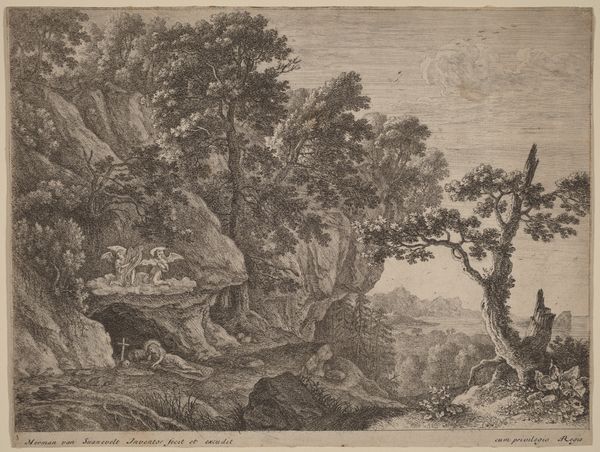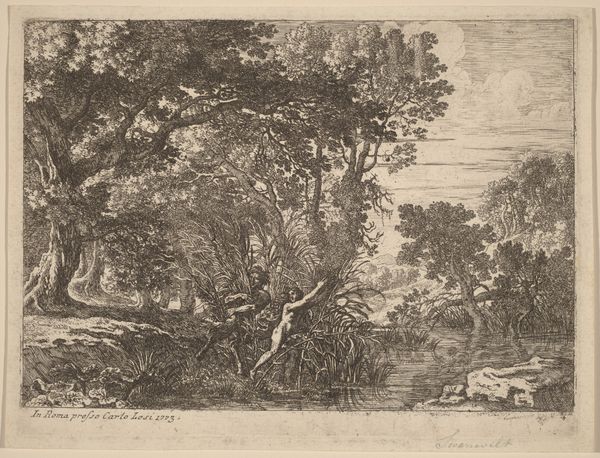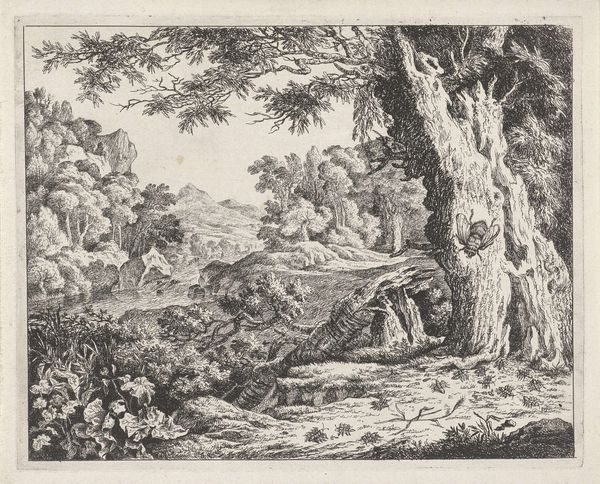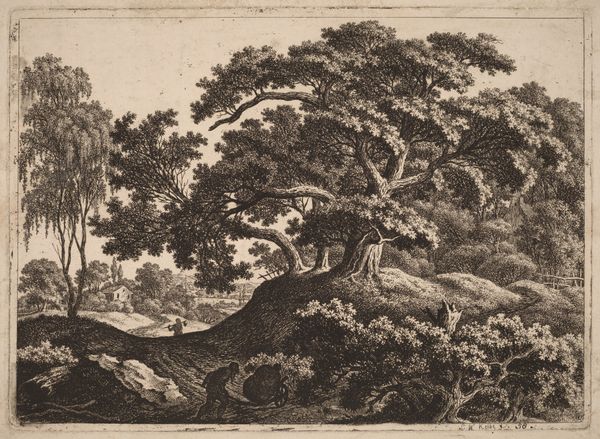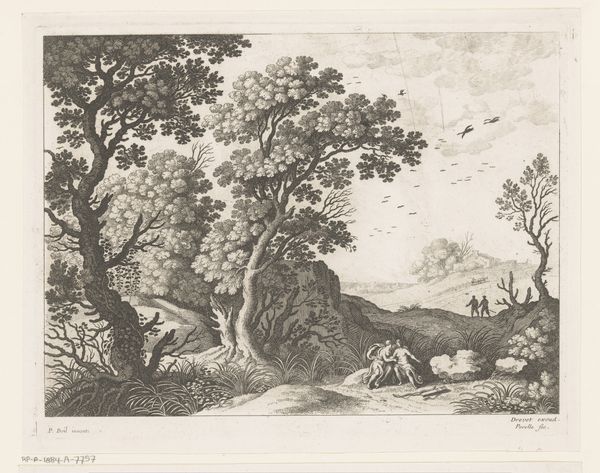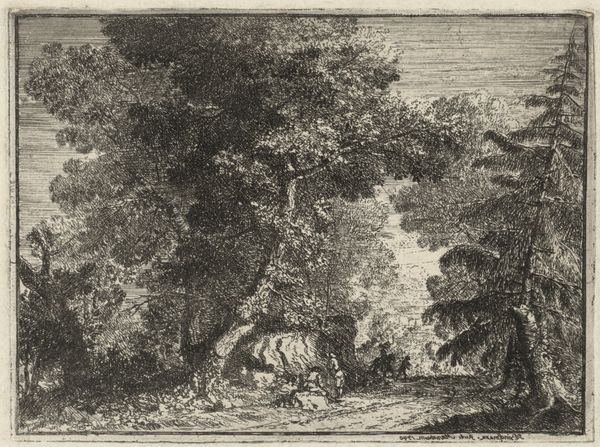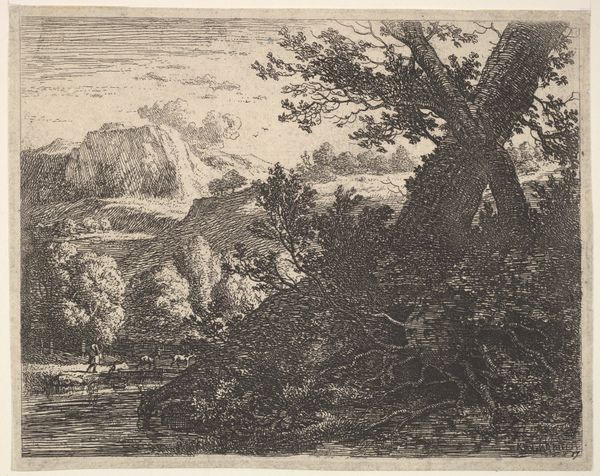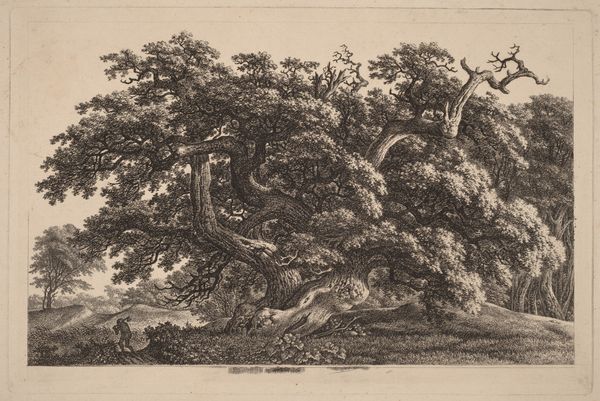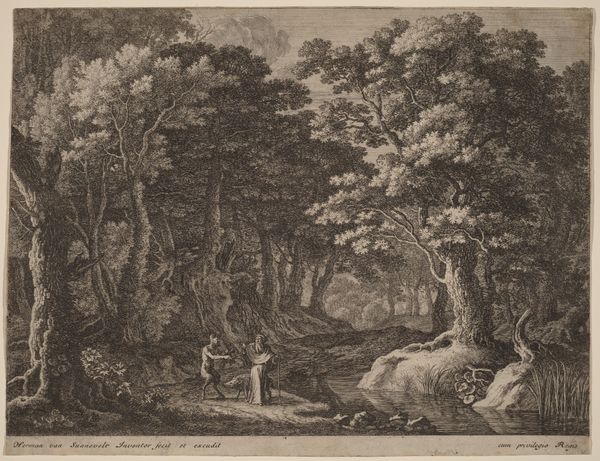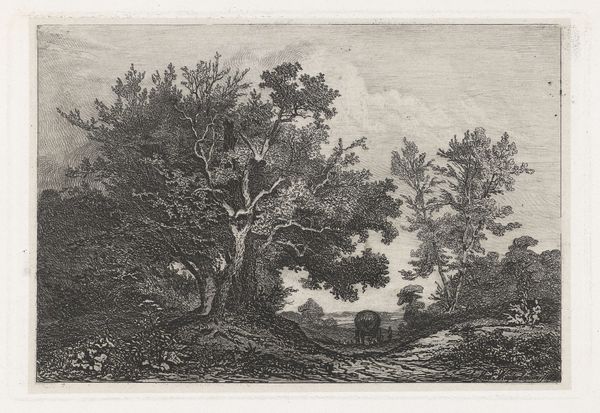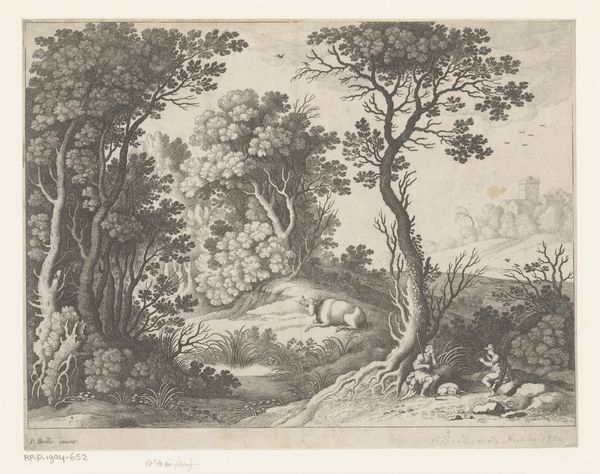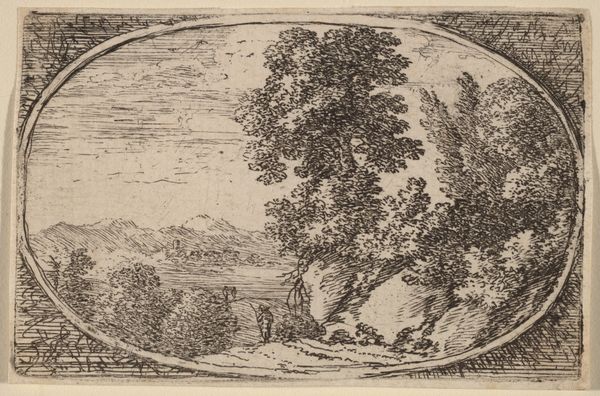
drawing, print, ink, engraving
#
drawing
#
ink drawing
#
pen drawing
# print
#
landscape
#
figuration
#
ink
#
romanticism
#
engraving
Dimensions: plate: 26.1 × 32.7 cm (10 1/4 × 12 7/8 in.) sheet: 26.6 × 33.5 cm (10 1/2 × 13 3/16 in.)
Copyright: National Gallery of Art: CC0 1.0
Curator: This engraving, crafted around 1800 by Carl Wilhelm Kolbe, is entitled *Landscape with Large Leaves and Three Satyrs*. The intricate inkwork pulls you into a scene teeming with fantastical life. What strikes you most when you look at it? Editor: Initially, I’m struck by the scale. The foliage in the foreground is dramatically oversized, creating a somewhat unsettling juxtaposition with the diminutive figures bathing in the distance. Curator: That dramatic foliage does dominate, doesn't it? It's almost as if the plant life is a character itself. Given the period, and the explicit presence of satyrs, we can see the long shadows of Romanticism looming. Kolbe conjures a mythological past. Consider how satyrs, these half-human, half-animal figures, have long been potent symbols in art and culture. Editor: Indeed. They are the embodiments of the wild and untamed, the Dionysian spirit disrupting civilized order. Placing them within this landscape emphasizes that tension. Is this nature a place of escape, a space for primal urges, or is it a dangerous wilderness beyond the control of society? Curator: Both, I think. This tension is visible through the art. The precision of the engraving lends a sense of realism, yet the scene itself is clearly a construct of imagination. The foliage almost obscures the figures; what looks like safe nature could also be constricting, even frightening. This is especially highlighted by the large leaves obscuring parts of the engraving. The artist uses the plant life to lead and obscure. Editor: It reminds me of the period's fascination with the sublime. There’s a deliberate play with scale and detail to evoke awe and perhaps even a sense of fear. Even the decision to render it in monochrome reinforces the overall somber mood. What role did prints like this play in the cultural landscape of the time? Curator: Prints allowed for wider dissemination of images and ideas. Something like this, invoking classical mythology within a Romantic framework, would have found a receptive audience among the educated elite, furthering cultural knowledge about mythological imagery. The way Kolbe merged observation of nature with imaginative mythological elements mirrors a larger intellectual trend, shaping how audiences of that era saw both culture and landscape. Editor: Looking closely, one appreciates the labor that went into creating it; every stroke seems meticulously planned, revealing cultural touchstones for its intended audience. There's a certain visual drama that really keeps you searching. Curator: Yes, an art piece that really opens our cultural understanding. The play between detail and the broader Romantic vision is fascinating, allowing us to contemplate culture through artistic symbolism.
Comments
No comments
Be the first to comment and join the conversation on the ultimate creative platform.
